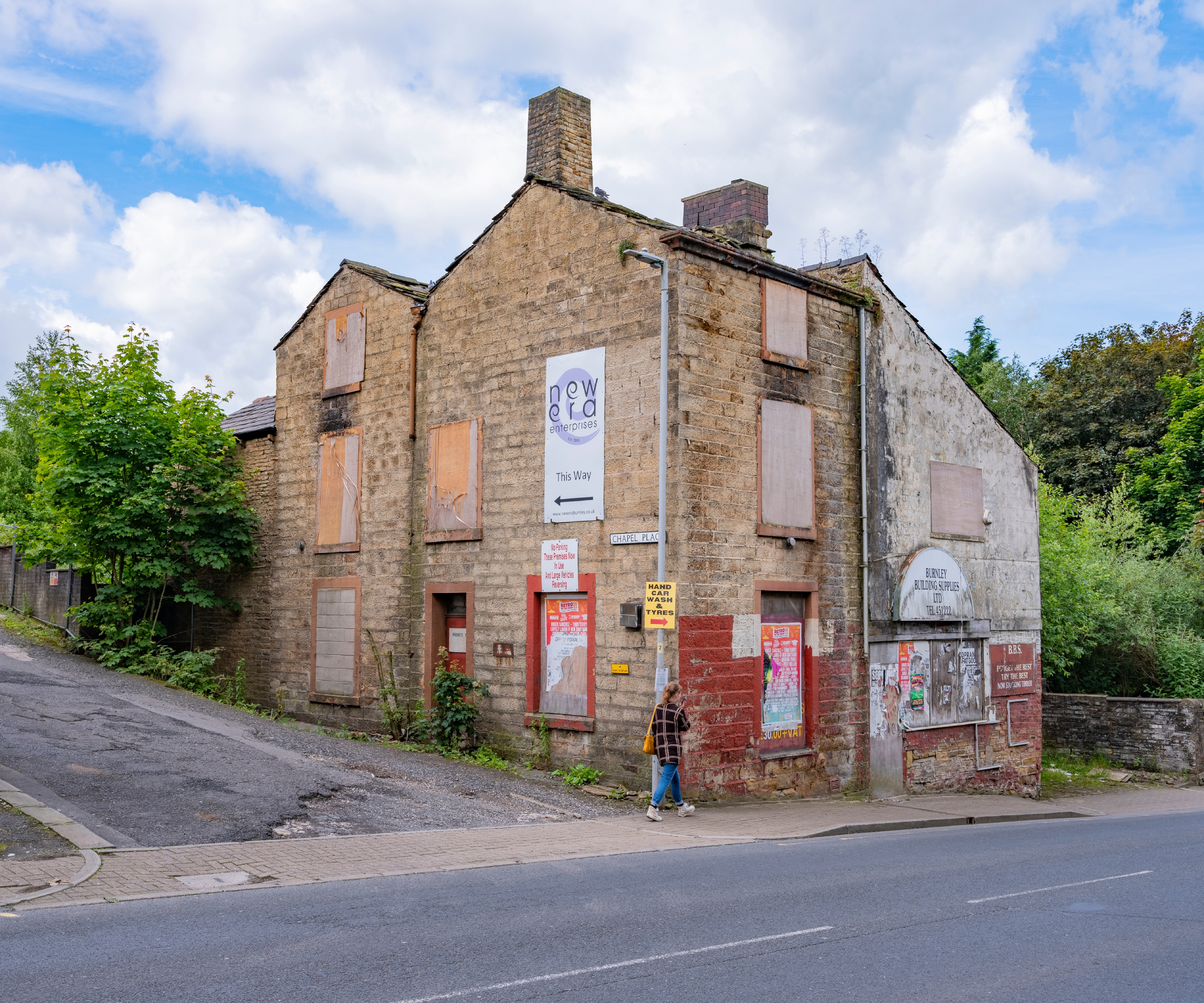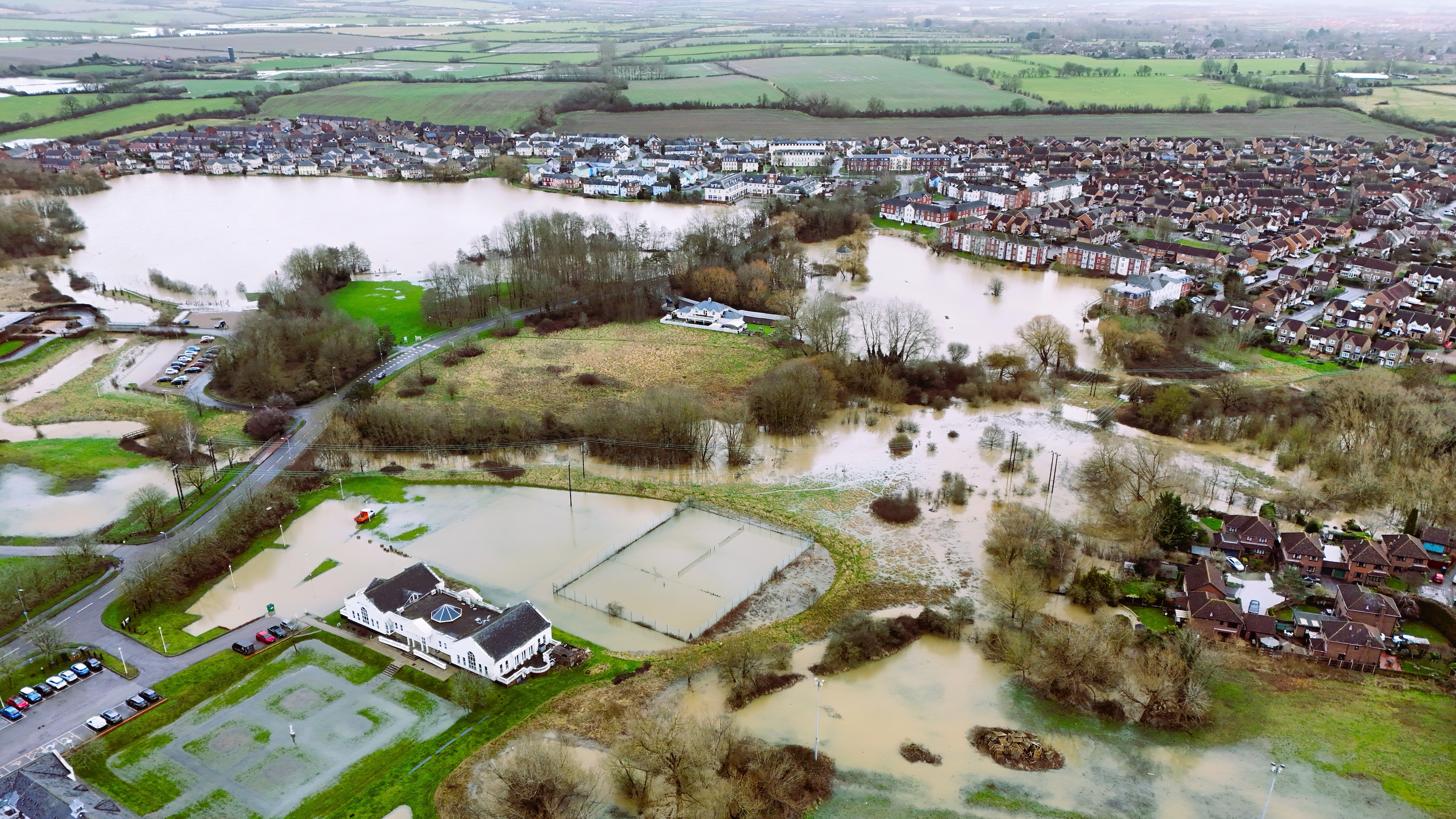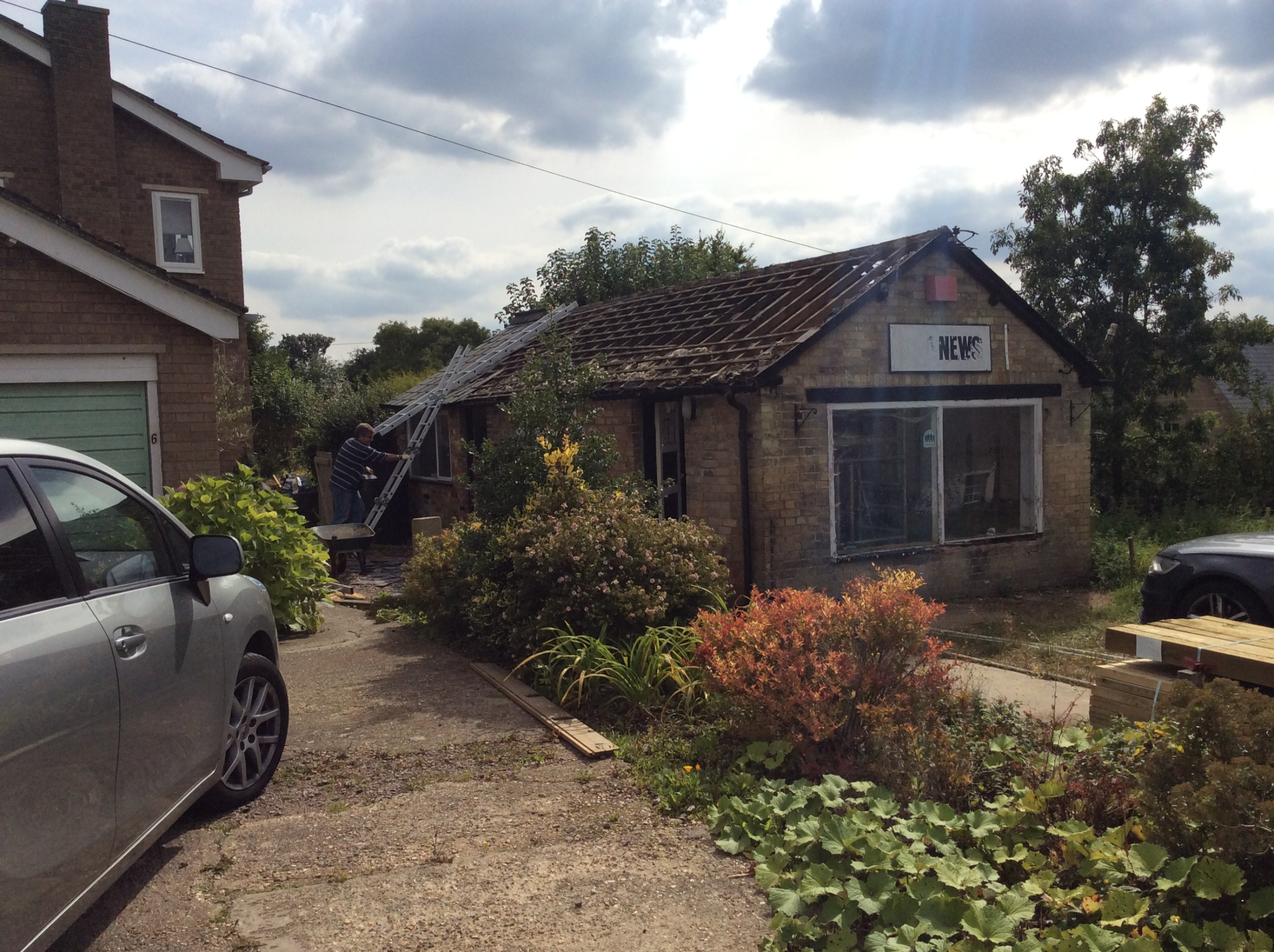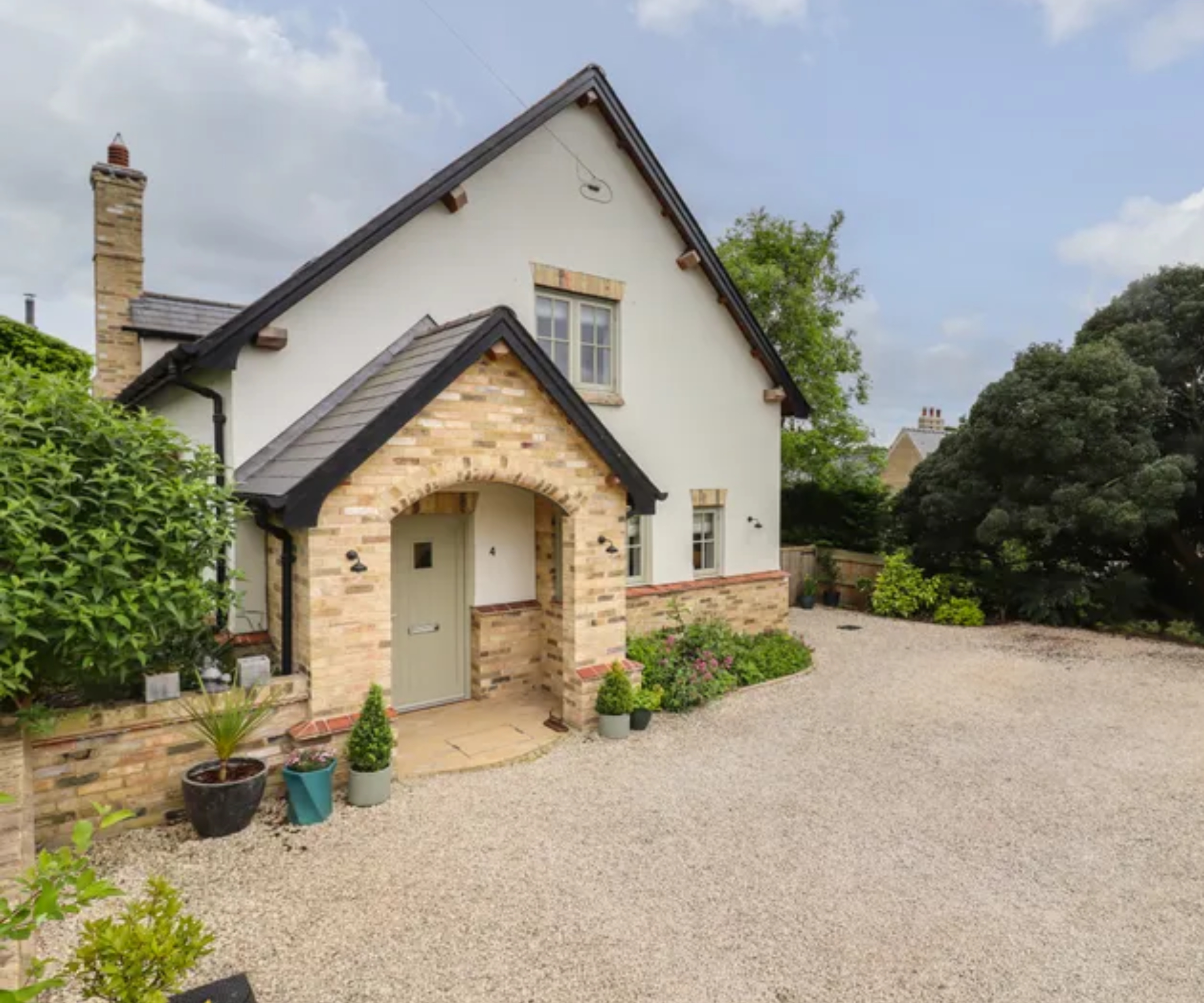Change of use — 'How we turned designated commercial land into a residential plot for a family home'
If you've found a plot but you need to apply for change of use, building expert Mark Stevenson explains what's involved and how he successfully obtained permission to do just that

When you’re hunting for a building plot, it’s easy to think you’ll stumble across a neat patch of grass with planning permission already sorted and services waiting at the boundary.
In reality, that almost never happens and more often than not, the best opportunities are hidden in plain sight – old garages, barns, or even, in building expert Mark Stevenson's case, a disused post office.
But before you take on any piece of land for your self build project, it’s essential to understand how land is designated and what that means for planning. It’s not just about spotting potential – it’s about knowing what’s possible (and what’s not) under planning rules.

What are land designations?
Land designation is basically how a local council classifies different pieces of land within planning policies and within its development plan. These designations determine what the land can legally be used for, for example, residential, commercial, agricultural, recreational, or protected space etc.
From a planning point of view, these designations are incredibly important because they set out what the council will or won’t approve. If the land isn’t designated for housing, getting planning permission for a home can be anything from difficult to completely impossible.
Which land designations are suitable for residential development?
Generally speaking, land that’s already in residential use or allocated for housing in a council's Local Plan is the easiest to work with. These sites are usually considered acceptable in principle for development.
Other potentially suitable designations include:
Bring your dream home to life with expert advice, how to guides and design inspiration. Sign up for our newsletter and get two free tickets to a Homebuilding & Renovating Show near you.
- Brownfield sites: These are plots that had previously had buildings on them or had a commercial use. Under recent national planning policies, councils tend to favour redeveloping brownfield land for housing, particularly in towns and villages
- Town and village infill plots: These are small gaps within established settlements, which can sometimes be developed, depending on scale and context
- Class Q conversions: Agricultural buildings that fit the criteria set out for a class Q conversion such as barns

Which land designations are not suitable for housing?
Some land designations are much harder to build on. Challenging examples include;
- Agricultural land: Unless you’re building a house for a farm worker, you’ll struggle to get permission to build a home on farmland. Local Plans usually protect agricultural land from residential development
- Open countryside: Land that sits outside of a settlements development boundary is referred to as open countryside and encroachment on it is generally frowned upon
- Flood zones: If the land is at high risk of flooding such as flood zone 3, the chances of securing planning consent are slim. You’ll need flood risk assessments, mitigation plans, and even then, housing may still be refused if there’s a better location
- Green Belt: Development is strictly controlled, and you’ll need very special circumstances to build, and a new home on previously undeveloped land rarely qualifies
- Protected employment land: Councils safeguard land for economic use like workshops or offices. They’re unlikely to approve housing on these sites unless you can prove the employment use is no longer viable.

When will residential development be refused?
Councils refuse residential schemes for all sorts of reasons, but if the land is clearly designated for another purpose, especially employment or agriculture, you’re on the back foot from the start. Other refusal triggers include:
- Lack of access or highways objections
- Harm to local character or conservation areas
- Impact on neighbouring properties
- Ecological or environmental concerns
- Incompatibility with the Local Plan or Neighbourhood Plan
If you’re working with a site that’s outside a settlement boundary or looking to build in a designated area such as Green Belt or an Area of Outstanding Natural Beauty, you’ll need a very strong case, otherwise refusal is most likely.
How to change the use of land
Changing the use of a piece of land to residential isn’t just a case of asking nicely and hoping for the best – it’s a process that needs careful thought, underpinned with planning savvy from a planning professional. It’s about convincing the local council that turning the land into a place to live makes better sense that retaining its current designation.
The first thing to do is understand how the land is currently designated. Every council has a Local Plan, which sets out what land can be used for. If your site isn’t already earmarked for residential use, you’ll need to apply for planning permission to change its use. This doesn’t mean changing the designation in a policy document but rather asking for approval to use the land differently.
Before jumping in, it’s well worth having a chat with a planning professional who can help you avoid common pitfalls and give you a sense of whether the council will support the application. If there are no major red flags, you can then submit a full planning application to show exactly what you’re proposing and why it fits the area.
Once submitted, the council will follow their planning process and will consider the impact of the change. There’ll be a consultation process and if all goes well, they’ll grant permission. There are no guarantees, but with a well-presented case and the right site, changing land to residential use is possible.
Some change-of-use projects, like turning a shop into a house can qualify for permitted development rights – meaning you can change the use without full planning. But these rights are limited and often don’t apply to certain types of properties and in protected areas such as areas of outstanding beauty (ANOB’s).
Our case study: from post office to family home
When we began looking for land in Cambridgeshire, we were quite optimistic, and assumed we’d find a building plot within a few weeks. Reality was somewhat different.
After months of searching and a few disappointing near misses, we came across a closed post office in the conservation area of a village. It wasn’t listed as a building plot, but we knew that there was potential to change its designation and secure a planning consent.
The building itself was uninspiring, poorly built and ugly. But the location was ideal, and the site had its own access. I knew that there was potential, provided we followed the right approach and made a strong argument for change.
We did our research and discovered that the post office had been shut for years. In fact, the village had setup a volunteer shop elsewhere, making the building redundant. The area was surrounded by houses, and this little commercial unit was effectively stranded in a residential street. It wasn’t listed, but it was in a conservation area and wasn’t protected as employment land.
We confirmed that the land was designated as commercial use, so we needed to apply for change of use to residential and make a strong case. We sought advice from a planning consultant who confirmed that the council’s local plan supported the reuse of redundant commercial buildings for housing, especially in built-up areas. Our planner warned us that change-of-use applications aren’t always straightforward, so we’d need a good design, clear justification, and likely, support from neighbours.

Rather than just apply for change of use, we submitted a full planning application for a new dwelling, along with a detailed design and access statement setting out the arguments for approving the change of use.
As the existing building was beyond economic repair, our proposal was to demolish the post office and build a modest cottage-style house in its place. We also set out the argument that the commercial site was effectively redundant, due to alternative facilities and the fact that the post office wasn’t likely to move back any time soon.
We worked with an architect to create something sympathetic and in keeping with the area. To be honest, the design was a pastiche of the past, but it did at least connect with the local architecture by using locally salvaged materials. It was designed to look like it had always been there.
The initial response from the planning department wasn’t particularly positive. The conservation officer was concerned with the impact on the conservation area and claimed that the design was too bulky and would harm to the street scene. Our planner disagreed and set about proving them wrong.
We carefully reviewed the planning history and the previous refusal reasons. It was clear that they weren’t against the principle of changing the land's designation as its retention would have implications to the newly setup shop. They were much more interested in the design, which was was something we could fix.
We asked the neighbours what they thought and by involving them in the design process, we won over their opinion that a new home of traditional style was the best use of the land. Our application included letters of support from neighbours and a planning statement that proved that the building had no economic value. Twelve weeks later, we received consent and with it, confirmation that the land could now be used for residential purposes.

What we learned
Changing the use of land is absolutely possible – but only if you understand the planning landscape and play within the rules. The most important areas to consider are:
- Know the land designation: This sets the context for an application. If it’s designated commercial, depending on its use, you could benefit from permitted development, but if it’s considered to have community value, you’ll need to justify why housing is a better use
- Get advice early: Speak to planners and consultants before submitting anything as they’ll know the issues at play and will help you steer around the inevitable bear traps
- Read past refusals:. They often reveal exactly what went wrong before and provide the clues to making a successful application
- Talk to the neighbours: They don’t have to love your plans, but it helps if they don’t hate them
- Design matters: Councils are far more likely to approve something that looks right in its setting, especially in designated areas such as conservation areas
Changing the use of land is a good way to find a building plot and unlock potential in overlooked sites. Whether it’s a former shop, garage, or in our case, a tired old post office, these spaces can be hiding in plain sight. But success isn’t about luck - it’s about research, scouring sites such as Plotfinder for opportunities, good design, community engagement, and persistence.
If you’re prepared to do the legwork and invest in making a strong case, you might just find your perfect plot hiding in the most unexpected place. Looking back now at the home we built, I still can’t quite believe what we pulled off. All it took was seeing the potential – and not being put off by the planning process.
For more advice on buying a plot, make sure you understand the 12 red flags that shouldn't be ignored, and if you're struggling to find a site, make sure you've ticked all the boxes regarding where to buy land.
Mark Stevenson has worked as a construction professional for over 30 years and following an extensive career in housebuilding. He is currently chief operating officer for Custom Build Homes and chair of the National Custom and Self Build Association. He previously worked as managing director for Potton, helping self builders build their own homes.
Whilst Mark describes himself as a ‘professional builder’ as a result of his career in housebuilding and timber building system manufacturing, he has specialist knowledge of timber construction and extensive expertise in finding land and project management.
He regularly shares his knowledge at Homebuilding & Renovating Shows and and coaches self builders about how to build their own homes. Aside from Mark’s professional career, his skills also extend to practical building knowledge as a skilled joiner, hands-on renovator and serial self-builder of his own development projects.
He is also Vice Chair of industry body, the Structural Timber Association.

